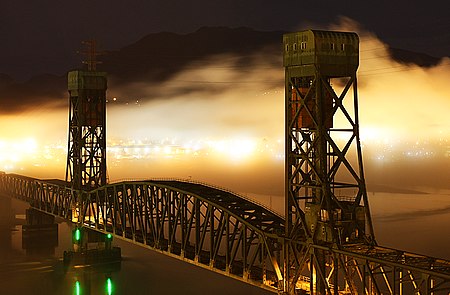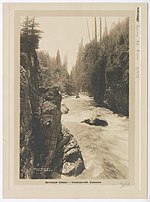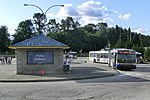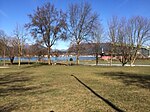Second Narrows Rail Bridge
Bridges completed in 1925Bridges completed in 1968Bridges in Greater VancouverBuildings and structures in VancouverCanadian National Railway bridges in Canada ... and 4 more
Railway bridges in British ColumbiaTransport in North Vancouver (district municipality)Use Canadian English from September 2021Vertical lift bridges in Canada

The Second Narrows Rail Bridge is a vertical-lift railway bridge that crosses the Burrard Inlet and connects Vancouver with the North Shore. The bridge's south end connects directly to the Thornton Tunnel, which connects it to the main Canadian rail network. As the name suggests, it is located at the second narrowing of the Burrard Inlet.
Excerpt from the Wikipedia article Second Narrows Rail Bridge (License: CC BY-SA 3.0, Authors, Images).Second Narrows Rail Bridge
Trans Canada Trail - Burnaby Heights Trail, Vancouver Hastings-Sunrise
Geographical coordinates (GPS) Address Nearby Places Show on map
Geographical coordinates (GPS)
| Latitude | Longitude |
|---|---|
| N 49.294638 ° | E -123.024484 ° |
Address
Trans Canada Trail - Burnaby Heights Trail
V5K Vancouver, Hastings-Sunrise
British Columbia, Canada
Open on Google Maps








